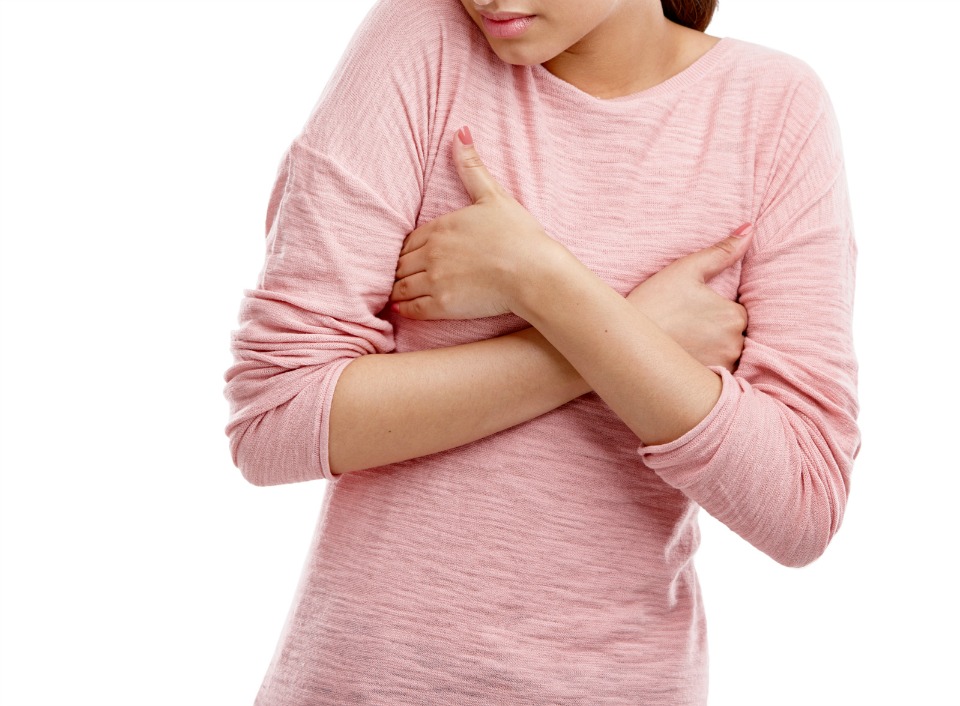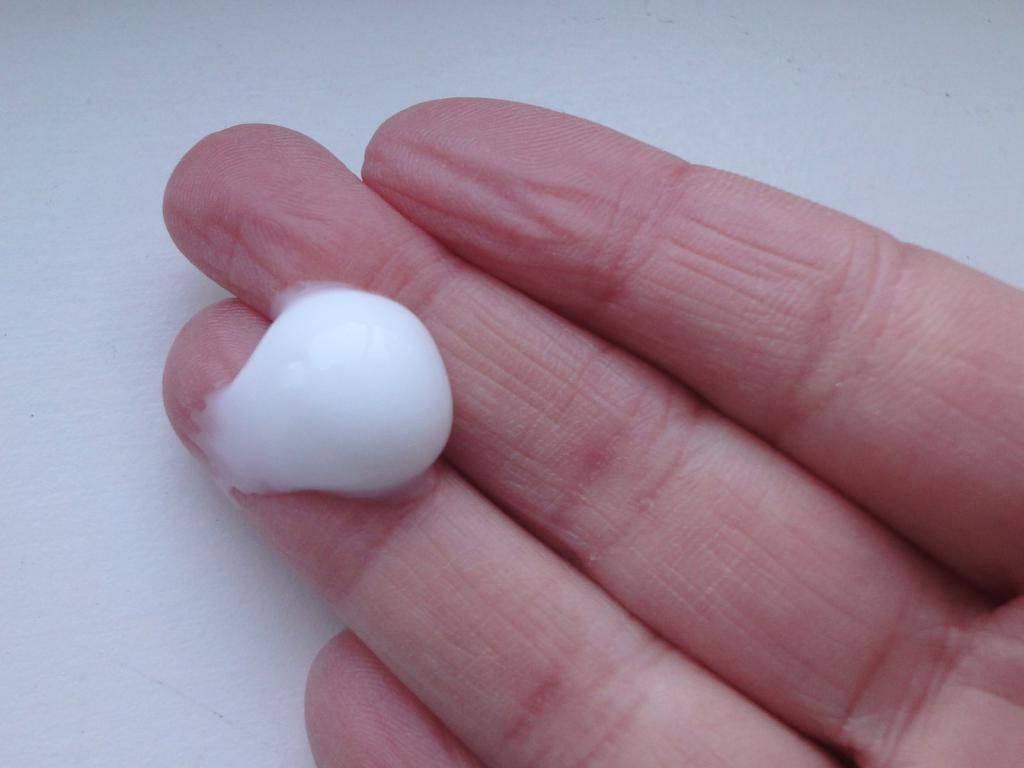What does redness under the breast mean? We will understand this article.
The condition of the skin of a person is an indicator of painful or pathological processes occurring in the body. Neoplasms or a rash in the chest area may indicate the development of various pathologies, which are determined based on the size, color and sensitivity of the rash.
The presence of red spots under the breast may in some cases indicate an infectious disease in the tissues of the mammary glands, which leads to swelling, soreness and swelling. Spots are easily visualized and palpated.
Diaper rash: description and causes
Diaper rash in the chest space refers to the inflammatory process localized in the skin folds. Most often, diaper rash appears in the female part of the population in the hot season. It is during this period that excess moisture accumulates under the breast, which provokes the active reproduction of pathogenic microorganisms. Friction of clothing can also lead to diaper rash.
Red spots under the chest occur against the background of infectious, fungal and other pathological processes. Particularly high risk of diaper rash in the presence of scratches, abrasions and wounds. The following causes of diaper rash under the breast are distinguished:
- Overweight.
- Hyperhidrosis.
- Violation of the rules of personal hygiene.
- Large breast volume.
- Allergic reaction.
- Wearing uncomfortable underwear that rubs your skin.
- Diabetes.
- Dermatological diseases of an infectious nature.
The pathological process is activated as a result of careless drying of the skin and poor ventilation in the chest area. Sometimes redness can be triggered by taking antibiotics.
What does it look like?
Diaper rash under the breast in appearance resembles psoriasis, eczema and dermatitis. Therefore, an important stage of the examination is differential diagnosis. In the laboratory, material is taken to determine the sensitivity of pathogens to antibiotics. The blood sugar level is then checked to rule out diabetes, which is often accompanied by hyperhidrosis.
Sweating: risk factors
Increased activity of sweat glands can lead to irritation under the breast in both sexes. Sweating is characterized by burning and itching, as well as redness of the skin and other symptoms. On its own, sweating does not pass and requires medical treatment with local drugs.
Everybody knows what a baby's sweatshirt looks like. Similar spots occur in women.
They are formed for the following reasons:
- Structural features of a woman's chest anatomical in nature. If air access to the chest is limited, sweat builds up in the chest area. With hyperhidrosis, an infectious skin lesion can occur.
- Friction while wearing a bra. This is the most common cause of spots. Due to friction, injuries of the dermis occur, which leads to skin irritation and sweating in women.
- Wearing fake, synthetic fabrics, as well as very tight clothing. Artificial tissues are not ventilated, which leads to excessive sweating.
- Lesions of the skin with staphylococcus and streptococcus.
- Use of irritating skin powders and detergents.
- Poor quality skin care products.
In some cases, sweating in the chest area occurs due to a malfunction in the functioning of the endocrine system and metabolic processes.
When does it progress?
Red spots under the chest progress under the following conditions:
- Damage to the skin.
- High-intensity physical activity.
- Weight gain.
- Fever, fever.
- Neglect of personal hygiene.
- Diabetes.
- Disorders of the nervous system.
- State of stress.
Looks like a sweatshirt, you should find out in advance. It is the cause of discomfort and requires the elimination of the cause that provoked this pathology. If untreated, prickly heat can turn into a more serious illness, such as eczema.
Pimples on the chest: the preconditions for the emergence of
Medical practice shows that acne appears in the chest, on the back and neck as often as on the face. However, the chest area is usually hidden from prying eyes, so patients rarely turn to dermatologists for rashes in this area. Many hope that the rash will go away on its own, but this is the wrong approach, since acne can signal a serious pathological process in the body.
There are several main factors that can lead to itching under the chest and rash:
- Blockage of the ducts responsible for the elimination of sweat and fat. In this case, acne is white, small in size and affects large areas of the skin.
- An allergic reaction to the use of perfume or cosmetics, detergents.
- Impaired thermoregulation. Hypothermia or overheating as a result of wearing clothes made of synthetic materials that do not allow air to pass through and irritate the skin. Acne in this case is red. Impaired thermoregulation is characteristic for people with excess body weight.
- Hormonal imbalance. The secretion of sebum by the skin promotes the natural hydration of the epidermis and strengthens local immunity. Changes in the hormonal background, provoked by puberty, menstruation, the period of bearing a child or endocrine pathologies, lead to an imbalance in the skin and, accordingly, the appearance of purulent acne under the breast.
- Endometriosis In some cases, women with this pathology have acne in the chest area, but after treatment, the problem is eliminated.
- Frequent stress. Acne can cause acne on the chest. The rash in this case passes along with the establishment of an emotional background.
- Immunodeficiency. In this case, any rash on the body is a serious danger, as this negatively affects the general condition of the patient, and also increases the risk of sepsis.
- Diabetes. In this case, acne on the chest appears in the case of severe diabetes in an uncompensated form.
- Unbalanced diet, allergy to certain products.

Rash: causes and characteristics of rashes
A rash in the chest area refers to irritation and redness of the skin, accompanied by itching, soreness and other uncomfortable sensations. In some cases, a rash in the form of blisters and peeling is also possible.
The causes of red spots under the breast can be a variety of dermatological problems and diseases. In this case, the nature of the rash will differ in each individual case. The main causes of the rash are as follows:
- Sweating as a result of increased sweating in the hot season. Blisters are accompanied by itching and are formed due to blockage of the glands responsible for the production of sweat. At the initial stage, the rash is small plaques that merge into blisters over time. As a rule, the rash goes away on its own after a few days. The affected skin should be regularly dried and ventilated. What else can a rash under the breast mean?
- Dermatological candidiasis. It is an infection of a fungal nature. Yeast is activated in conditions of humidity and high temperature. Candidiasis on the skin is characterized by the appearance of bright red spots. Sometimes the affected areas of the skin may become crusty or wet. If glucose is in the sweat of the patient, the process of reproduction of the fungus is accelerated. At risk are patients with diabetes.
- Scabies. The disease is highly contagious. The causative agent of scabies is a special scabies mite. The parasite moves in the upper layers of the skin and provokes the appearance of an itchy rash. The spots are numerous, have uneven sharp edges. Armpits, wrists, groin and nipples, as well as breast folds are most often affected.
- Bacterial damage. Most often, the appearance of a rash is provoked by Staphylococcus aureus. In this case, in addition to redness and itching, ulcers appear. Infection quickly affects healthy areas of the skin.
- Allergy. Such a rash under the breast may appear when wearing some artificial materials or when using aggressive detergents.
- Mammary cancer. With the progression of oncopathology, it can be a fatal outcome. Signs of a neoplasm in the mammary gland may be a rash, accompanied by soreness and fever. Rashes can affect both one and both breasts. Mammary glands require special attention on the part of women. Specialists recommend visiting a mammologist several times a year, especially with a predisposition to cancer.

Treatment
Drug treatment involves the use of various drugs for topical use, that is, ointments, creams and gels. In the treatment of skin rash, drugs should have a pronounced antiseptic and antibacterial effect. The most effective means for eliminating a rash in the breast area are Fukortsin, manganese and methylene blue. Before starting treatment, it is important to consult a doctor who will clarify the diagnosis and prescribe a suitable remedy. In addition, you must carefully read the instructions for any drug that is planned to be applied to the skin, as well as conduct a test for the sensitivity of the epidermis to its components. The remedy for diaper rash can be purchased at any pharmacy.
When you need to quickly dry your skin and remove excess moisture, drugs and powders are prescribed, which also contribute to the healing of wounds. It can be, for example, Bepanten or D-panthenol. If the rash is accompanied by severe itching, antihistamines are prescribed, both orally and for topical use. Antibacterial agents are prescribed in cases when acne with purulent contents appears on the skin.
Zinc ointment
Zinc ointment is very popular in the treatment of skin rashes and redness. It is applied to the affected areas of the dermis up to three times a day, dries and relieves inflammation, and also contributes to the rapid healing of wounds.
Antibacterial agents
The most popular antibacterial skin ointments are:
- Levomekol. Used for burns, ulcers and deep skin lesions. Enhances local immunity.
- Bactroban. Effectively fights against staphylococci, and also shows activity against a strain resistant to methicillin.
- Gentaxan. Wound healing, antibacterial drug that eliminates ulcers and various skin lesions.
- "Baneocin." An antibiotic that quickly and effectively eliminates ulcers and the inflammatory process.
- "Fastin." Antibacterial ointment for the skin, relieves inflammation and eliminates pus. Suitable for the treatment of burn skin lesions.
- "Metrogil" is intended for the treatment of acne and acne. The drug has an antimicrobial and antiprotozoal effect.
- Klenzit. It also has a pronounced antibacterial effect and is suitable for the treatment of rashes and redness, including in the area under the breast.
- "Fusiderma." It relieves inflammation and has an anti-allergenic effect. Suitable for the treatment of dermatitis of various origins.
Treatment of irritation under the breast must be carried out under the supervision of the attending physician, following all the recommendations of a specialist.
Prevention
To prevent the appearance of a rash and redness on the chest, several preventive rules should be followed that will protect the mammary gland from the negative effects:
- Daily warm shower with soapy water.
- Wear only clean underwear.
- Do not try on bras on a naked body.
- Once a month, carry out a preventive self-examination, which will help to identify changes in the skin, redness, rash, etc.
- Choose linen based on the composition of the fabric and the quality of the product. Choose the right size so that the laundry does not hamper the movement and does not create friction.
- Visit a mammologist regularly, doing this at least twice a year.
- If the first signs of dermatological problems appear in the chest area, consult a specialist.

With minor skin lesions, the doctor will examine the chest and prescribe an ointment to eliminate unpleasant manifestations. If there are signs of a pathological process, the specialist will prescribe a more thorough examination. A woman needs to be responsible for her breasts and understand that this is an important part of her reproductive system, responsible for the production of hormones and taking part in the process of conception. Any violations that occur in this area of the female body can have consequences for the rest of the body, therefore it is not worth it to self-medicate if it detects redness under the breast.